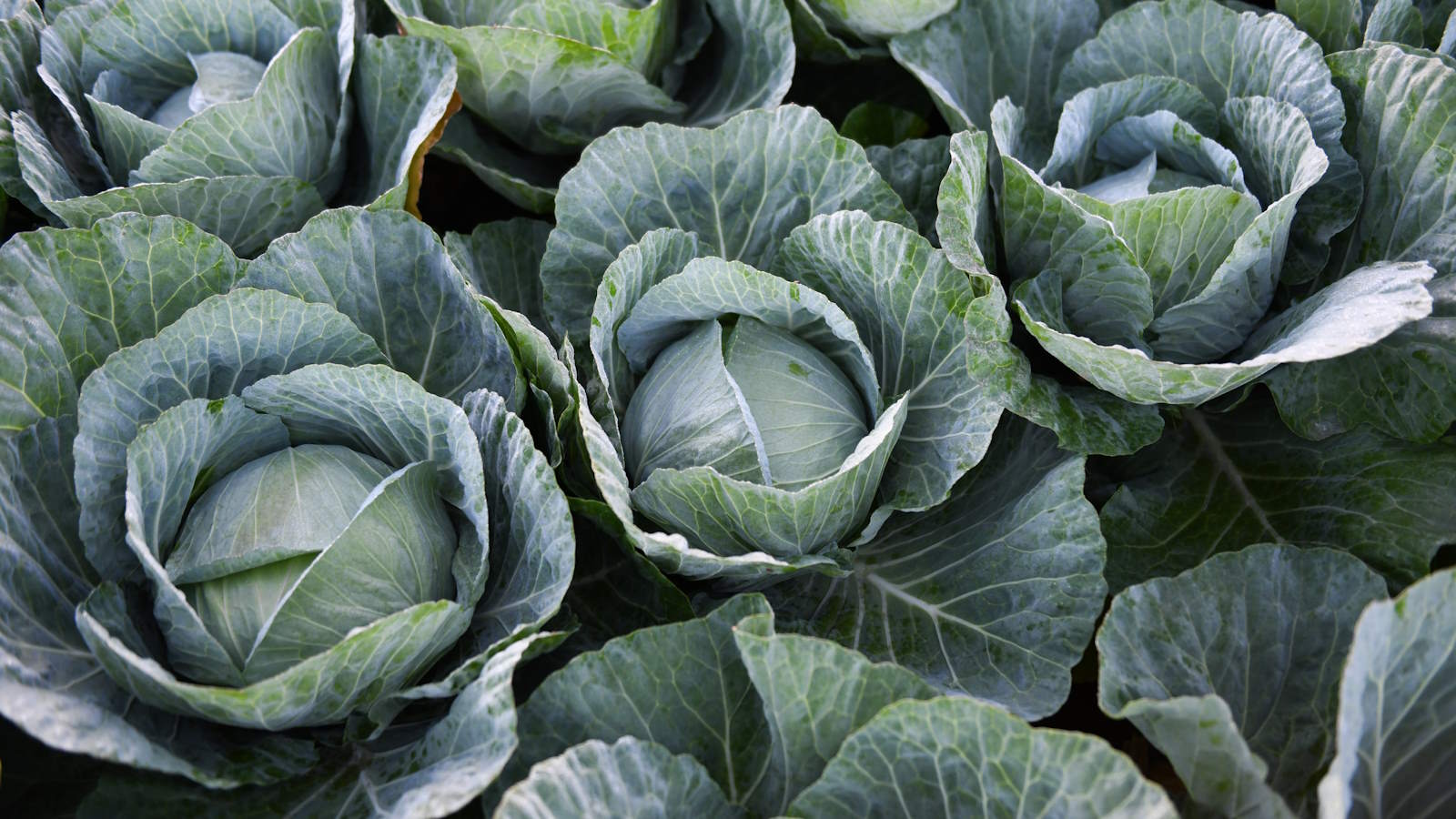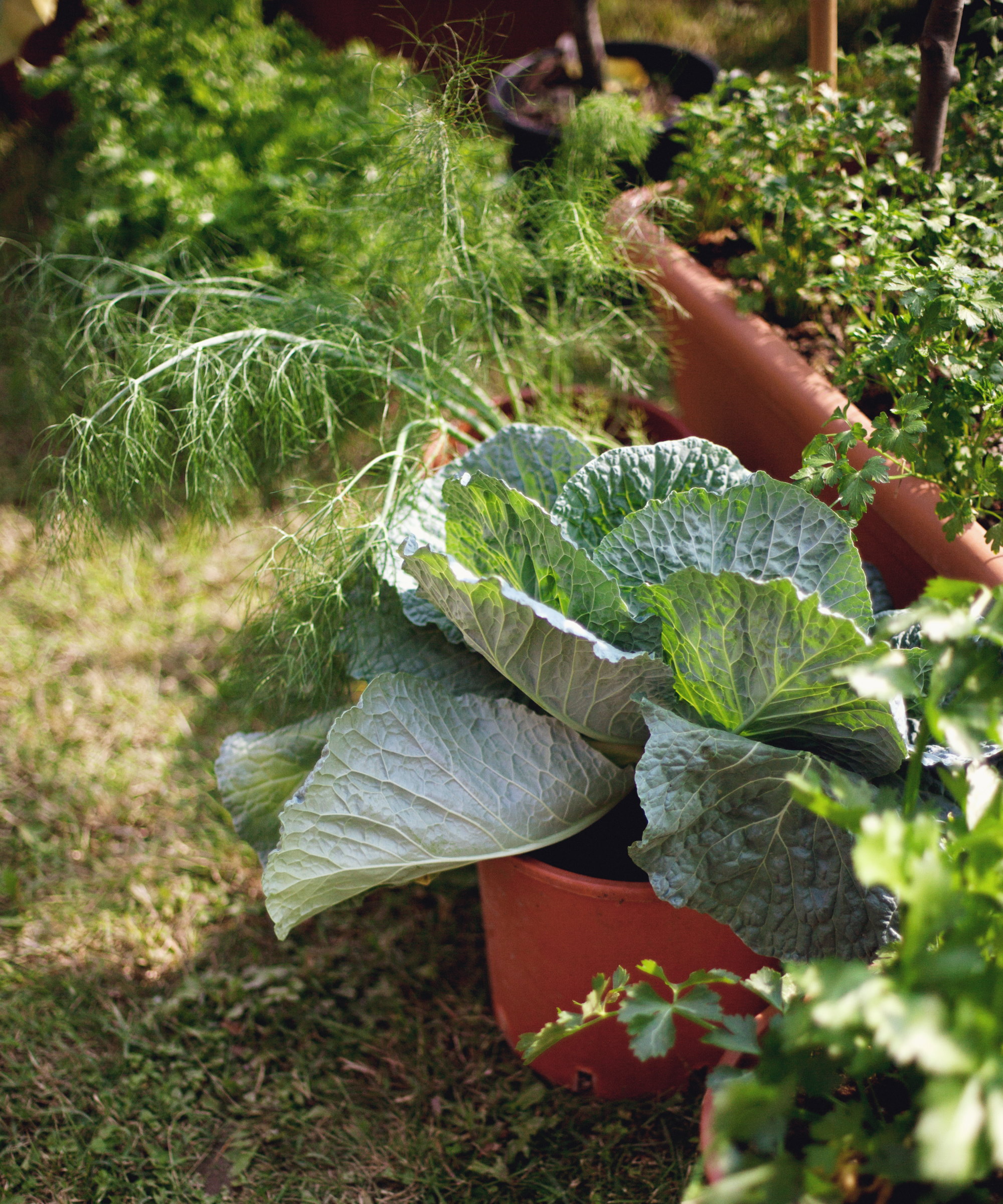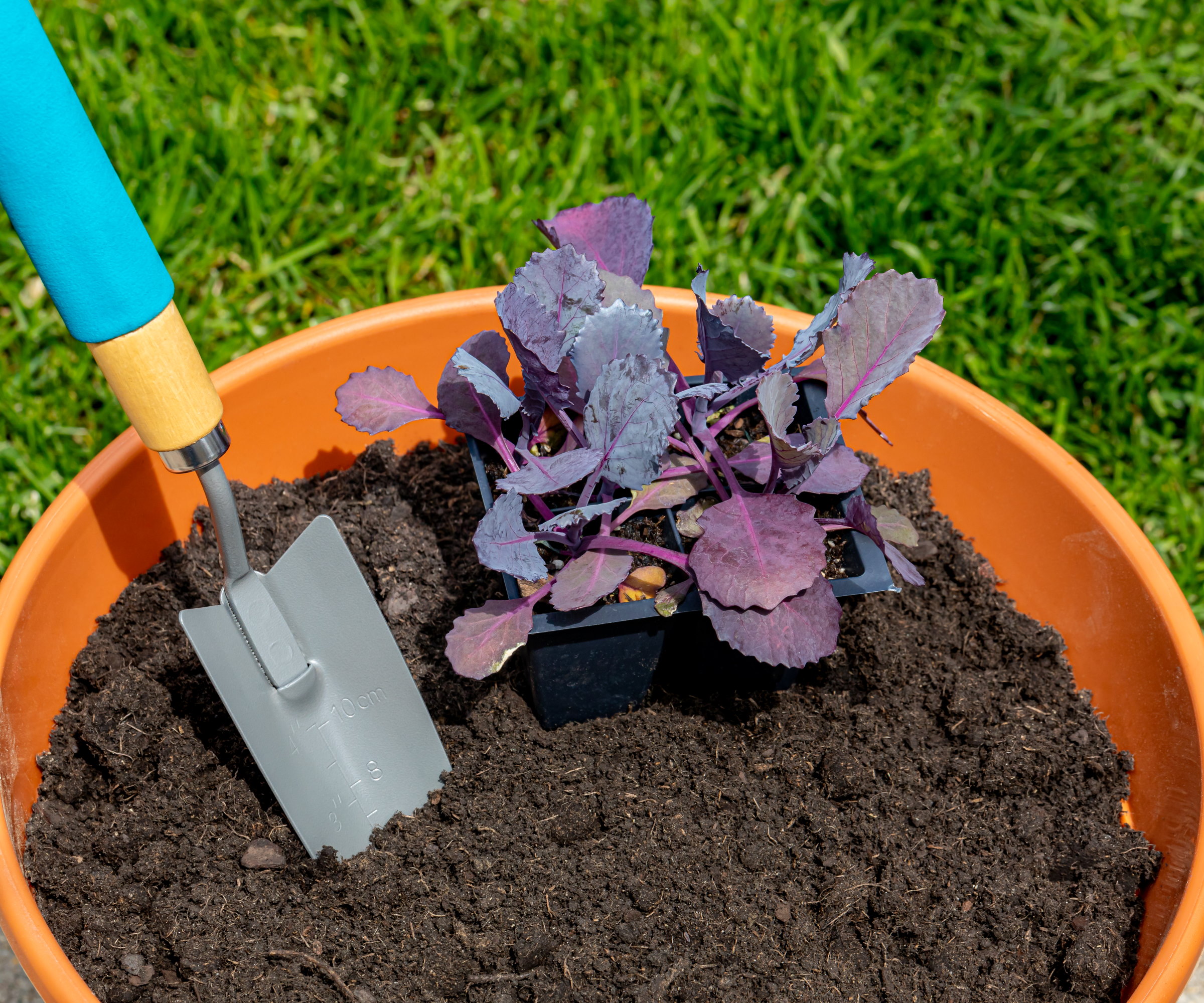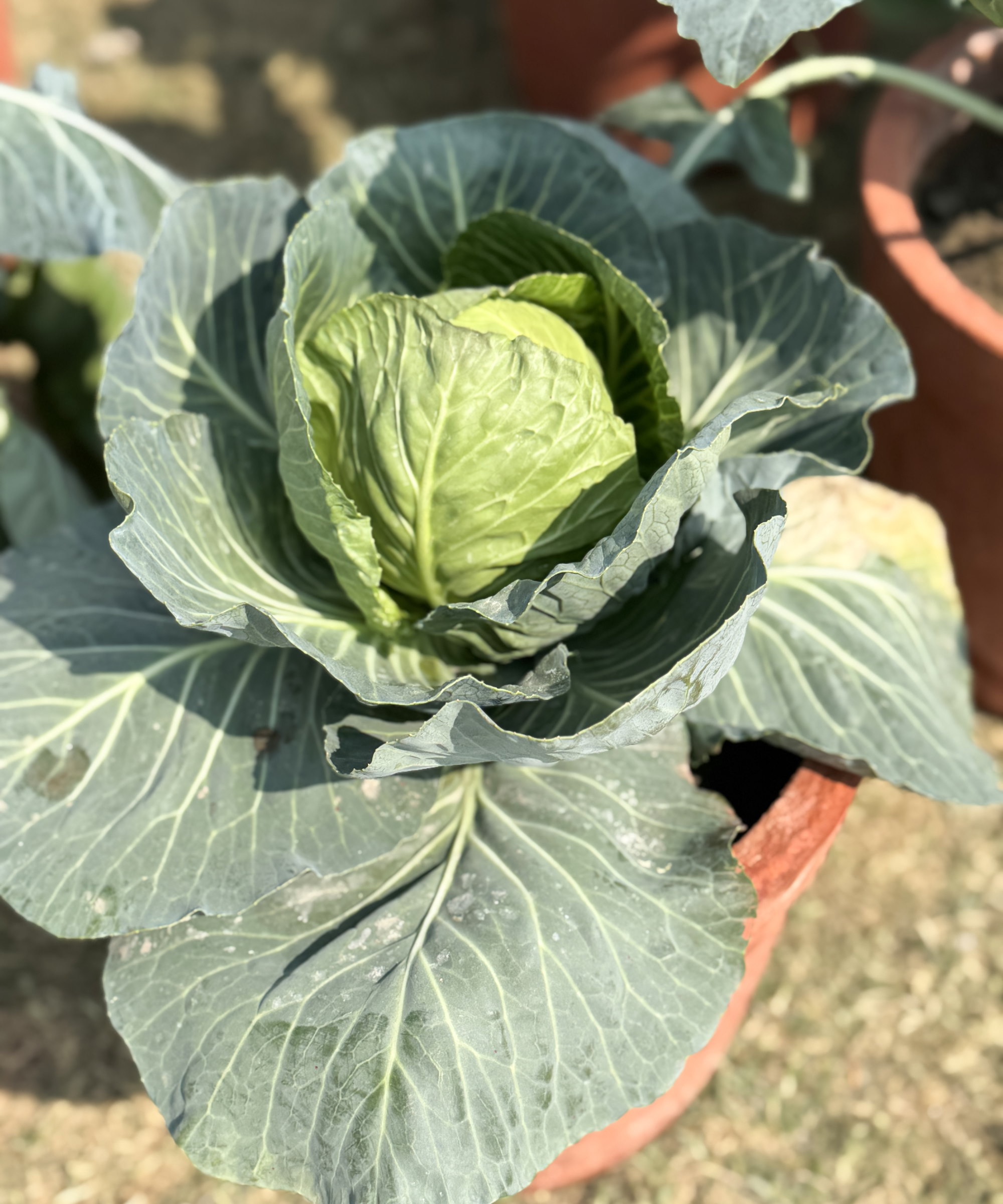
Growing in containers is a fantastic way to enjoy homegrown vegetables in smaller urban gardens. Cabbages are a staple crop in many vegetable gardens and a versatile one that can be grown successfully in containers.
There are advantages to growing cabbage in containers, such as pots, grow bags, or buckets, as you have extra control over the location and soil compared to growing in the ground. However, close attention has to be paid to the extra watering and feeding required with growing vegetables in pots.
I have grown cabbages for many years. As well as gardening professionally in vegetable gardens, I cultivated lots of vegetables in pots at home in smaller spaces. If you want to grow cabbages in containers in a small yard, patio, deck, or balcony, here are some essential tips you need to know.

Can you grow cabbage in a container?
Yes, you can successfully grow cabbages in any vegetable container garden. I look closely at the best containers to use and give tips to grow cabbages in containers successfully, so you get the best cabbage harvest from a pot, bag, trough, or bucket.
How to grow cabbage in a container

There are lots of different varieties of cabbage to grow throughout the year. You can grow any combination of spring cabbages, summer cabbages, savoy cabbages, or winter cabbages for a virtually year-round harvest.
Most varieties of cabbage are suitable for growing in containers, but opt for smaller varieties as those that produce extra-large heads will require larger pots.
Cabbages are vegetables that produce large root systems and need space to develop to full size. Therefore, you need large containers to accommodate the cabbage and allow it to mature properly. Any container should be at least five gallons, or 12 inches wide and 12 inches deep, as a minimum.
The containers can be made from various materials, such as plastic, ceramic, or terracotta. Alternatively, you can grow cabbages in grow bags or buckets, provided they can hold at least five gallons of compost.
Any pot must have drainage holes in the bottom and be filled with a quality potting soil for container gardening. One of the advantages of growing vegetables in a container garden is that you can control the soil quality and place the containers in the ideal spot where cabbage can get the sun it requires.
Most cabbages are best grown one plant per five-gallon pot; however, a trough or rectangular container can house multiple cabbages for a good crop. In such a planting situation, each cabbage will need at least 12 inches of space.
Caring for cabbages growing in containers

Young plants can be bought from garden centers, nurseries, or online to plant vegetables straight into the pot.
Or you can grow your cabbages from seed. This can be done by starting vegetable seeds indoors and transplanting seedlings into the pot, or directly sowing seeds outdoors into the container.
No matter how you plant cabbages, when you grow cabbages in containers, four key aspects must be right for a bumper crop:
- Location - Place your cabbage container in an open and sunny position, ideally with at least 6-8 hours of direct sunlight daily. Cabbages can grow in part-shade and will benefit from some protection against the afternoon sun in warmer climates. This can protect the cabbage from stress and prevent bolting.
- Watering - Cabbages growing in containers need more watering than plants growing in the ground. It is vital to keep the soil evenly moist. Cabbage plants want an inch or two of water a week. It may mean watering once or twice a week, and a soil moisture meter, available at Amazon, can be helpful to judge when to water plants. Avoid overwatering as it can cause the heads to split or the roots to rot.
- Feeding - Cabbage plants are heavy feeders and will need regular feeding as they can drain the nutrients in the potting soil. A good quality potting mix should contain enough nutrients for the first month. Give plants a dose of organic slow-release fertilizer and then feed plants with a liquid high-nitrogen fertilizer every few weeks once the heads start to form. This grow big liquid plant food, available at Amazon, is a good example of a feed to use.
- Pests - Cabbages are susceptible to many different pests. The biggest threat, and a pest that can destroy plants, is cabbage worms, which become cabbage white butterflies. The easiest way to prevent issues is to cover plants with netting to keep cabbage worms, cabbage loppers, and other caterpillars away from plants.
Shop containers for cabbages
A set of lightweight and durable five-gallon plastic plant pots. The drainage holes and slightly raised feet help excess moisture drain away and prevents root rot.
A set of 10-gallon grow bags made from thickened nonwoven fabric to use for growing cabbages. The bags are durable, tear-resistant, and reusable.
A set of sturdy buckets that can hold five gallons of soil. Complete with drainage holes in the bottom, they are perfectly suitable for growing cabbages in.
Another brassica ideally suited for growing in pots is kale. To cultivate this attractive and nutritious vegetable in a container, see our guide to growing kale in pots.
If I had to pick one kale to grow in a pot, I would pick cavolo nero, also known as lacinato or Tuscan kale, as it is a fantastic heirloom variety with ornamental crinkled leaves. You can get lacinato kale seeds or plants at Burpee to plant into pots in spring or fall.







